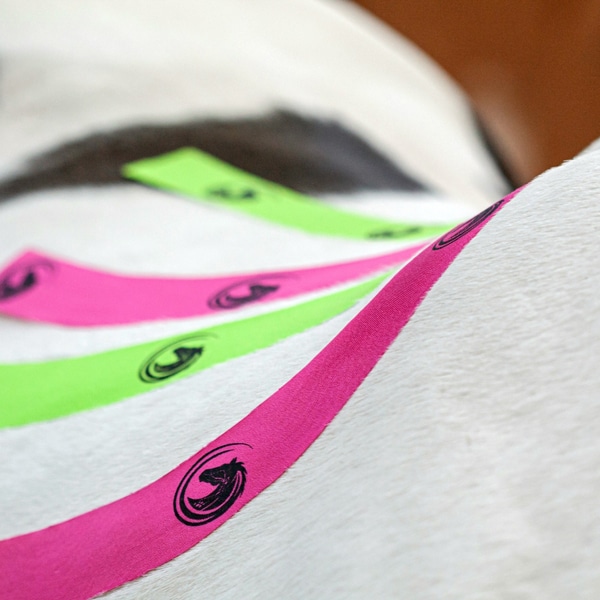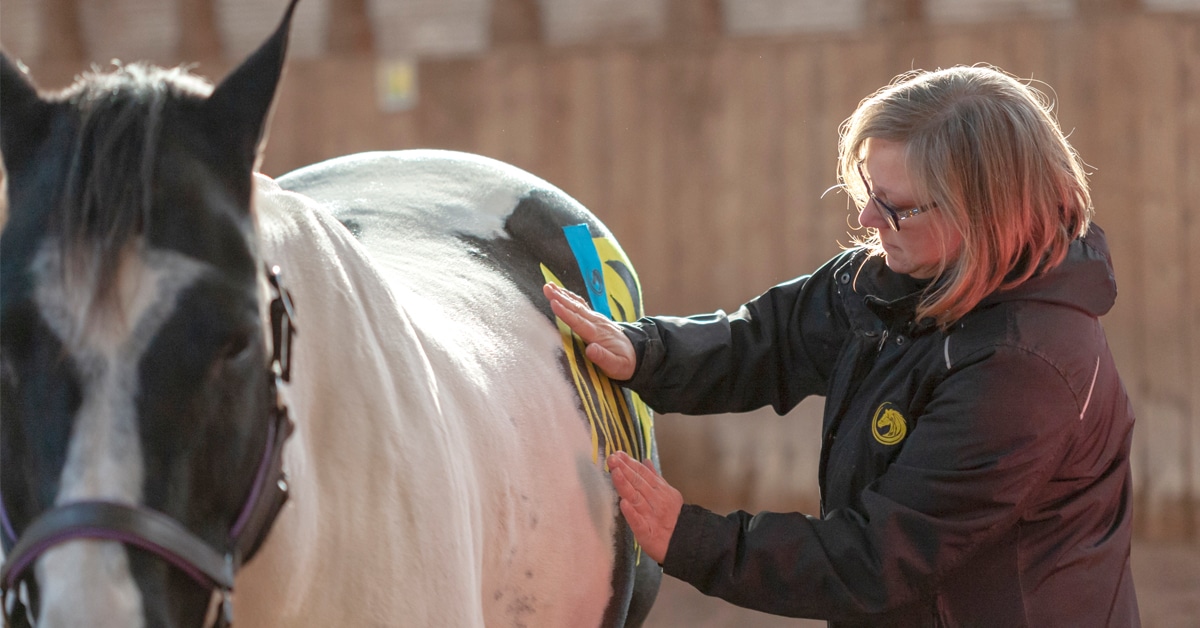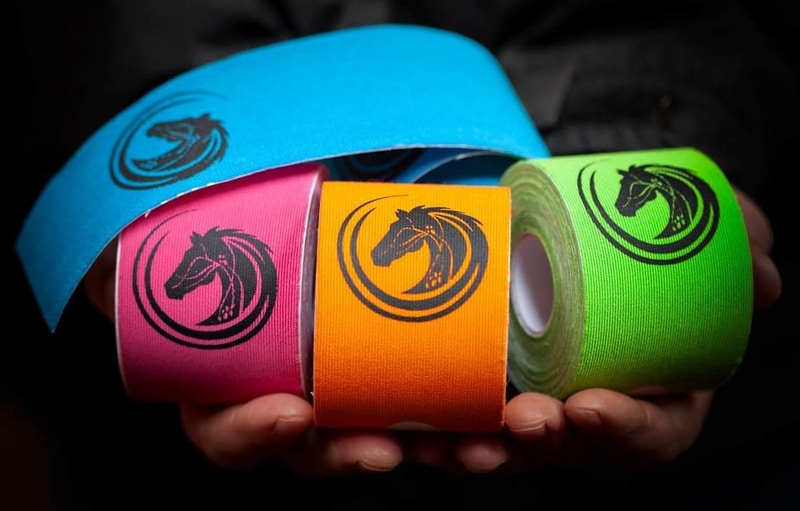Christa Veinotte of Truro, Nova Scotia, is an equine massage therapist who has specialized in treating horses since 1999, becoming the first certified ‘taper’ (applying kinesiology tapes) in Canada. Now, after several years in research and development, Veinotte is proud to announce that she has released her own line of kinesiology tapes ‒ the first developed for equines by a Canadian therapist.
Kinesiology taping for humans has been available since the 1970s to dynamically assist muscle function, stabilize or support injuries, relieve pain and facilitate normal movement, so it was only a matter of time until it crossed over to equine athletes. “I attended one of the first classes offered in North America in 2013 and was the first person to study equine kinesiology taping in Canada,” says Christa, who has since developed and instructed taping courses for other therapists and companies including Dalhousie University.
“As my taping skill set evolved, I found that I required more adhesion and less stretch from the tapes I was working with. The majority of my clients are being rehabilitated from injuries, so they are not always sleek and show-ready, so I needed a tape that could stick to the horse’s long hair for more than a few hours.
“I tried every tape I could find. It was kind of like Goldilocks and the Three Bears… this tape is too loose, this one won’t stick, that one is too thin.”
Frustrated, Christa decided to develop her own tape. “I knew the fabric weave had to be tighter and the adhesives stronger. After numerous prototypes and hundreds of rolls of tape later, I was finally happy with the combination I developed.”
But making money with her new-and-improved product was not her objective at the time. “Having no intention of selling my tapes, I used them in my own therapy practice for several years and did not tell anyone.”
But then the pandemic hit. “I started to receive messages from therapists all over the globe asking what brand of tape I was using. I had no answer for them … it was not a brand. It was just a tape I had developed for personal use on my clients. Next they would ask if they could try it on their own horses.”
The feedback and support that Christa received from those therapists was extremely encouraging. “They stated that I had to make this available for purchase. With their guidance, I set out a ‘Tape Tester Program’ where therapists could sample two full rolls my kinesiology tapes. I spent $35 on a Facebook advertisement asking “Do you need a tape that sticks?” In two-and-a-half weeks I sent out 70 sample packages to 10 different countries!”
As a result, Hestaband was born. (Hestaband is an Icelandic word meaning ‘horse tape.’ “Icelandic ponies are known for their ability to survive harsh conditions, which is why I named my tapes after them.”)
The company offers two kinds of tapes: Hestaband Cotton is a tighter fabric with less elastic fibers and a strong adhesive. Designed for muscle applications and is perfect for individuals learning to tape. Hestaband Satin is a different fabric weave with a super-strong adhesive designed for more advanced applications and it is also 70% waterproof.
“Both of my tapes were tested by therapists in their own practices and also on their own horses,” Christa explains. “And to be honest, they were very fair in that they used the tape in all terrains and circumstances. Their feedback was invaluable; they requested that I produce a 10 cm wide tape for broader applications, so I did.”
Despite the rave reviews her tapes have been getting from clients and therapists, Christa wishes there was more research into their effectiveness. A limited study in 2017 at the University of Veterinary Medicine Vienna involving a small group of 19 horses and ponies which were analyzed with, without, and immediately after kinesiotape application at the walk and trot found no significant positive or negative effects on forelimb trajectory.

Christa is currently developing a third prototype, but can’t share any specific information about the tape yet. She does advise that “If I am correct, this third tape is going to be a complete game changer for specific treatment protocols.”
Forever thankful to the industry colleagues who gave her the boost to get into business, this entrepreneur notes, “Truly, I have connected with some of the most talented therapists, and I am grateful that they gave me the encouragement to bring my kinesiology tapes to the rest of the world. I can help more horses this way then I ever could on my own.”
To reach Christa or learn more about Hestaband Therapeutics, click here.


